Bordeaux, the “Pearl of Aquitaine,” instantly evokes endless vines and exceptional vintages. It’s an invitation to a deep sensory experience, shaped by a unique terroir of gravel, clay, and limestone. Here, the Left Bank of the Médoc celebrates Cabernet Sauvignon for its structured grands crus, while the Right Bank of Saint-Émilion reveals velvety Merlots. This diversity makes every glass a story, and exploring the Bordeaux wine route makes every vineyard visit a discovery.
The best part? Your adventure is within reach! Thanks to Air Transat’s direct flights from Montreal to Bordeaux, now offered year-round, your rendezvous with these treasures is more accessible than ever.
When to plan Bordeaux vineyard tasting tours?
The best time to plan your visit to the wineries in the Bordeaux area depends on the experience you’re looking for.
- Winter (November-April) offers a different perspective. The vines are at rest, providing opportunities for more intimate cellars visits and in-depth discussions with estates owners, often at more advantageous prices.
- Spring (May-June) is idyllic, with tender green buds and a mild climate, perfect for peaceful château visits.
- Summer (July-August), the vines are lush, and grapes begin to ripen, but expect larger crowds and higher temperatures.
- Autumn (September-October) is the magical harvest season: book your grands crus visits early, as the winemaking tradition is at its peak! This is a chance to observe wine production, and some estates even offer immersive experiences.
What are the big 5 Bordeaux and what is the best wine region?
The Bordeaux Wine Route in Médoc
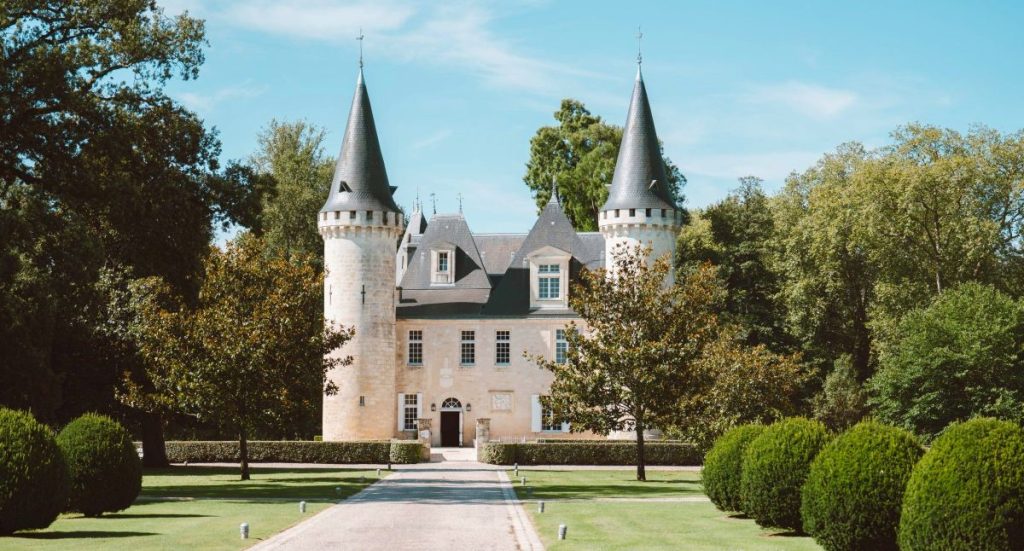
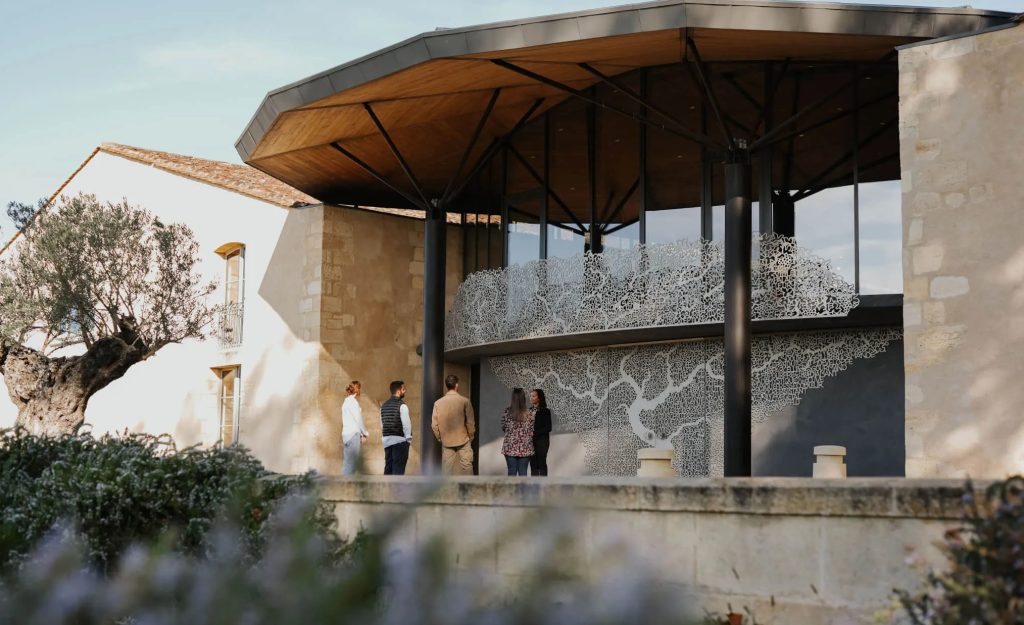
A territory of excellence for oenotourism, this wine route, about 100 km long, is the most famous and impressive. Located on the Left Bank of the Gironde, it brings together the most prestigious appellations and properties; here, you’ll discover 60 Grands Crus Classés, including the iconic Châteaux Lafite-Rothschild, Latour, Margaux, and Mouton-Rothschild, which constantly innovate in both oenology and wine tourism.
Here are a few options to visit:
- Château d’Agassac: One of the oldest estates in the Haut-Médoc, it’s a truly romantic fairytale château, adorned with slender towers and moats. This Cru Bourgeois Exceptionnel offers visits with tastings paired with local bites. Picnics are also available to fully enjoy this enchanting setting, which even hosts classical concerts in the summer.
- Château Ferrière: This estate was founded by a member of the French royal court in the 18th century. It remains a Third Grand Cru Classé of Margaux, maintaining a modest size and prioritizing quality over quantity, practicing biodynamics. The owner, Claire, offers a great demonstration of environmentally respectful viticulture with guided tours and tastings focused on their approach.
- Château Paloumey: A Cru Bourgeois Supérieur, this château is known for its warm welcome and modern facilities. It offers a very educational approach to a vineyard visit at an accessible price.
- Château Lynch-Bages: This prestigious château offers comprehensive visits that harmoniously blend authenticity and ultramodern facilities. Beyond the grands crus, discover many themed workshops and enjoy a sumptuous Relais & Châteaux establishment with a restaurant, lavish rooms, and suites.
- Château Kirwan: This vast estate, a 3rd Grand Cru Classé of Margaux, invites you to stroll through its magnificent gardens where the scents of nature delight the senses. Its 18th-century château stands beside an ultramodern harvest house overlooking the vines; this is where visits, cooking classes, and gourmet tastings are offered.
The Saint-Émilion, Pomerol, Fronsac Wine Route (Libournais)
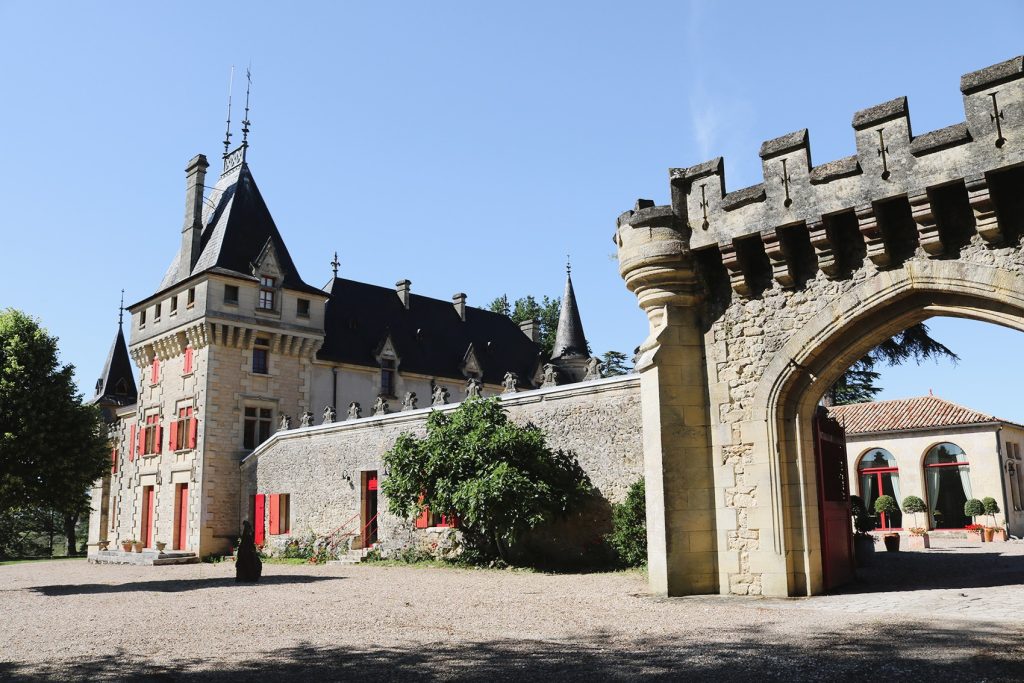
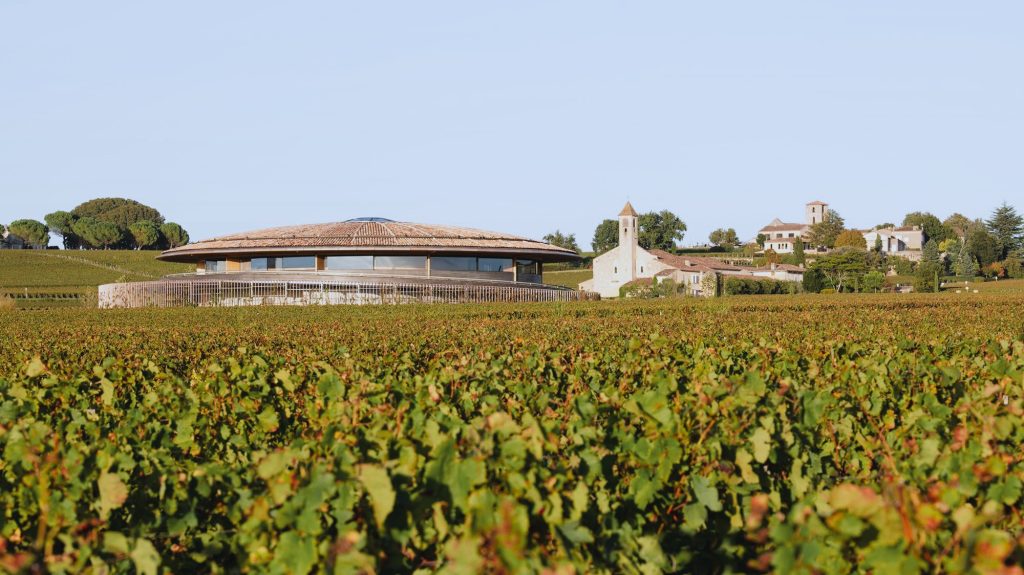
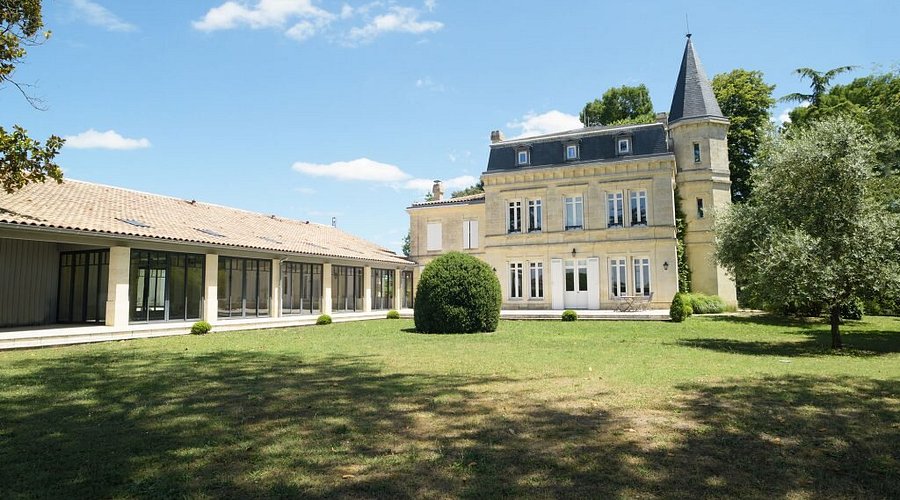
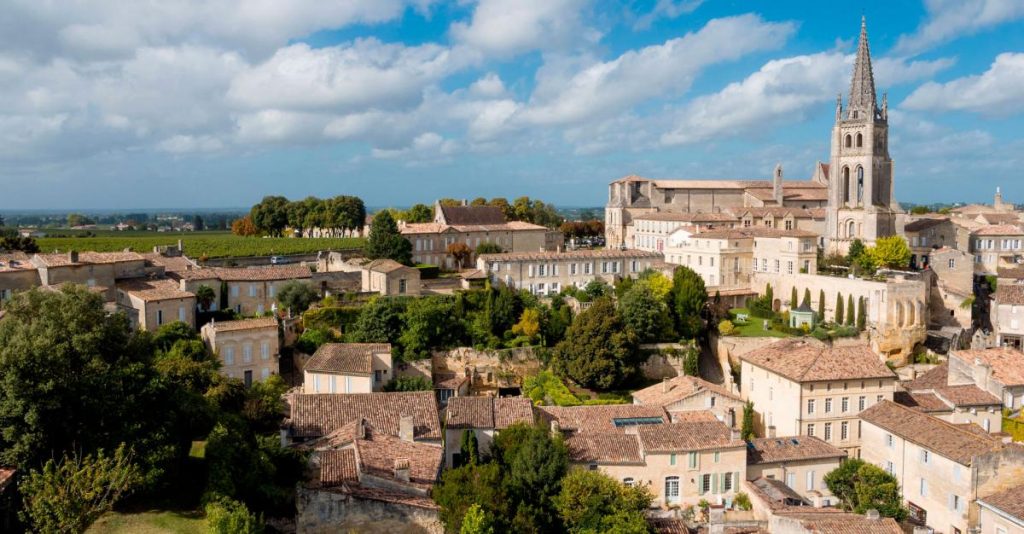
Marvel on a scenic drive where time seems suspended. As the first active wine production landscape listed as a UNESCO World Heritage Site, this wine route on the Right Bank of the Dordogne unfolds stunning rolling landscapes dotted with historic villages. Less than an hour from Bordeaux, it is home to nearly 900 winemakers. The vintages are primarily Merlot-based, complemented by Cabernet Franc and Cabernet Sauvignon, embodying the richness of four appellations: Saint-Émilion, Saint-Émilion Grand Cru, Lussac, and Puisseguin Saint-Émilion.
Here are a few options to visit:
- Château Saint-Georges: In its green setting, this magnificent 13th-century château with a feudal appearance dominates Saint-Émilion. It proposes diverse visits, from simple discovery to a countryside lunch or even a barrel tasting with a charcuterie and cheese platter. You can even take a horse-drawn tour through the vines!
- Château Yon-Figeac: Just a few minutes from Saint-Émilion village, this Grand Cru Classé is a magnificent 1886 limestone château with a charming tower. It boasts a new panoramic tasting room to sample its great vintage and understand its sustainable farming practices. Enjoy breathtaking views of the Saint-Émilion vineyards, and even picnics in its flowery park.
- Château de Pressac: This Grand Cru Classé, with authentic charm, is more accessible. It offers convivial visits, tastings, and magnificent views of the Bordeaux vineyards from its medieval château.
- Château Le Dôme: Designed by Lord Norman Foster, this château is an architectural “alien” in the heart of the Bordeaux vineyards. This technological marvel, built with raw materials, offers a unique experience through its modernity.
- Château Siaurac: A classified Historic Monument, this splendid 19th-century estate, built on an 18th-century vineyard, enchants in Lalande de Pomerol. Its remarkable 15-hectare park with centenarian trees, classified as an exceptional garden, invites serenity. Explore its vat room and cellars to taste its appellation Lalande de Pomerol, produced with sustainable viticulture. A memorable experience with food and vintage pairing lunches and charming rural accommodations awaits you.
- Château La Dominique: Grand Cru Classé of Saint-Émilion, this vineyard offers an experience where vintages, gastronomy, and art converge. Its contemporary cellar designed by Jean Nouvel and audacious red vat room create a striking modern allure. Finally, the restaurant proposes seasonal Southwest specialties on a panoramic terrace, with a 180° view over the vines of Saint-Émilion and Pomerol. Visits and tastings are by appointment only.
The Graves and Sauternes Wine Route

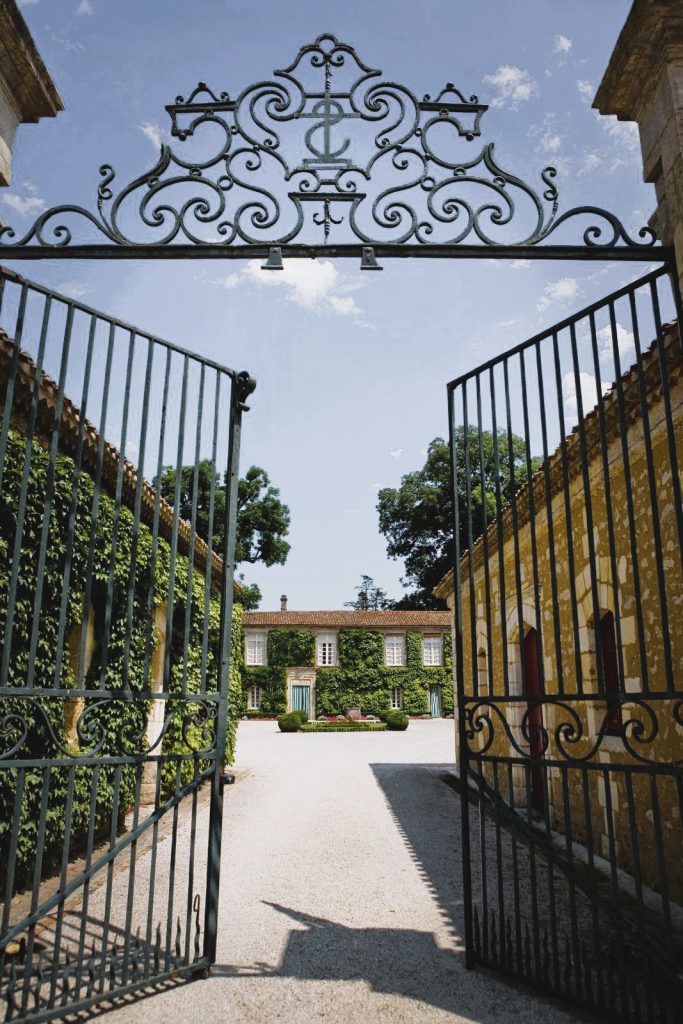
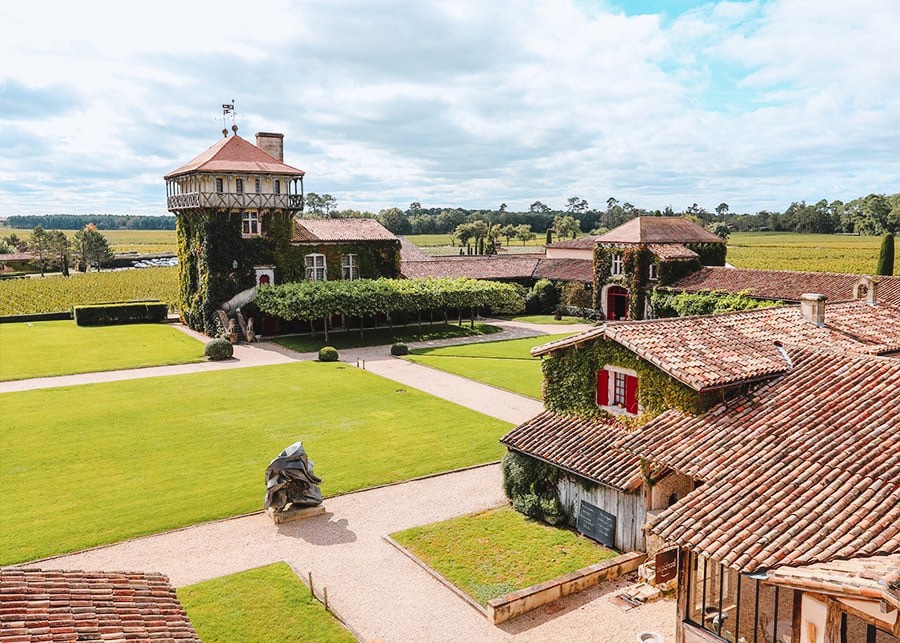
East of the city of Bordeaux, this historic region saw the first vines planted over 2000 years ago. Today, its 100 km route is the birthplace of elegant red vintages and the celebrated sweet vintages of Sauternes and Barsac, among the most renowned worldwide. You’ll discover a richness of estates, from illustrious grands crus classés like Château d’Yquem to charming family properties. Its proximity to the city makes it an ideal destination for a quick visit or a half-day trip.
Here are a few options to visit:
- Château de Portets: An ancient limestone fortress, Château de Portets is a site of exceptional architectural heritage, including a 14th-century Gascq Tower. Beyond its ancient viticultural purpose, this estate offers an unusual wine tourism experience: themed visits, film screenings, or a walking tour guided by a smartphone app through its vines and the village alleys.
- Château Smith Haut Lafitte: This prestigious estate offers a luxurious and unforgettable experience. Beyond the grands crus, enjoy the 5-star Les Sources de Caudalie hotel and its vinotherapy spa. An unforgettable visit for refinement enthusiasts.
- Château Gombaude-Guillot: This family estate, certified organic and managed by the same family since 1860, takes a respectful approach to nature and offers personalized vineyard visits.
- Château Carbonnieux: Managed by the Perrin family for several generations, this Grand Cru Classé combines prestige with a warm welcome. Informative cellars and vineyard visits help understand the production of their high-quality red and white vintages, at a reasonable price.
The Entre-Deux-Mers Wine Route
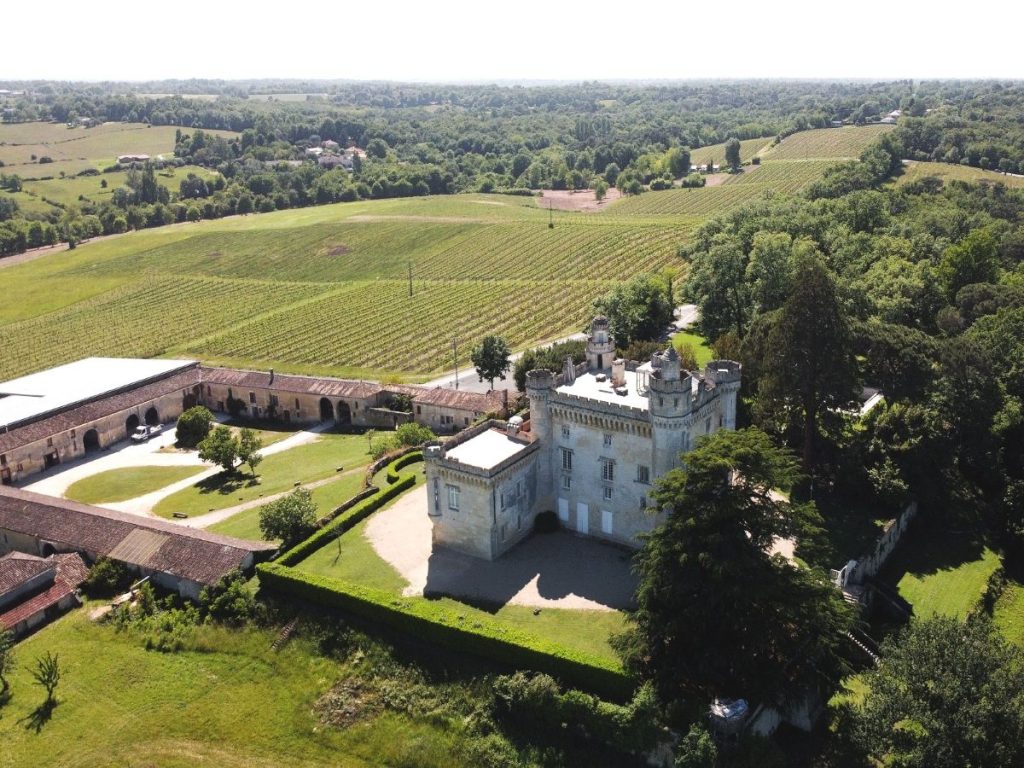
Located between the Garonne to the south and the Dordogne to the north – two rivers under oceanic influence – the Entre-Deux-Mers is the largest group of Appellations d’Origine Contrôlées in Gironde, with 17 AOCs spanning 7,000 hectares. Characterized by its gentle hills, abbeys, and medieval bastides, the region offers a wide palette of vintage styles, from dry whites to reds, in a more rural setting.
Here are a few options to visit:
- Château de Malherbes: This magnificent 16th-century château, built by a knight in Latresne, is an exceptional winery certified for High Environmental Value. Its new gravity-fed cellar offers visitors an immersive experience at the heart of the vines, focused on understanding vintage production through the five senses, across all stages of its elaboration.
- Château Le Grand Verdus: A family property since 1810, it is dedicated to the AOC Bordeaux Supérieur. This vast estate is certified organic and committed to agro-ecological responsibility across its 115 hectares, ensuring unique cuvées each year. Visitors can enjoy a visit with tasting, picnics in the vines, a nature trail for children and adults, and even a summer pop-up bar.
- Château de Camarsac: Built in the 14th century, this magnificent fortified château is an exceptional historical site. A leader in environmental responsibility, the estate offers an experience blending heritage and vintages: vineyard visits, tastings, cellars visits, and even accommodation. It’s also accessible by bus from Bordeaux!
The Blaye and Bourg Wine Route (Côtes de Bordeaux)
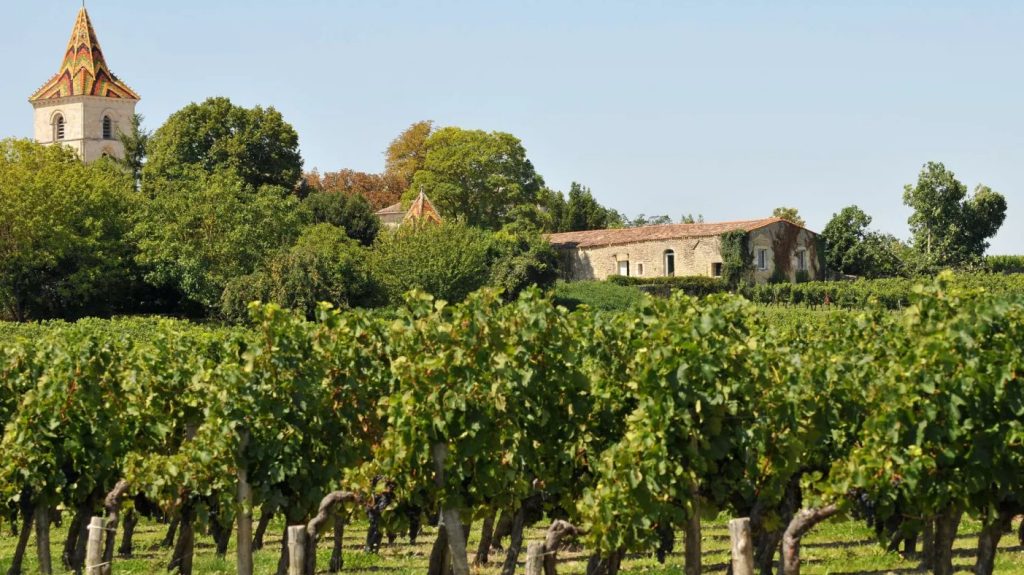
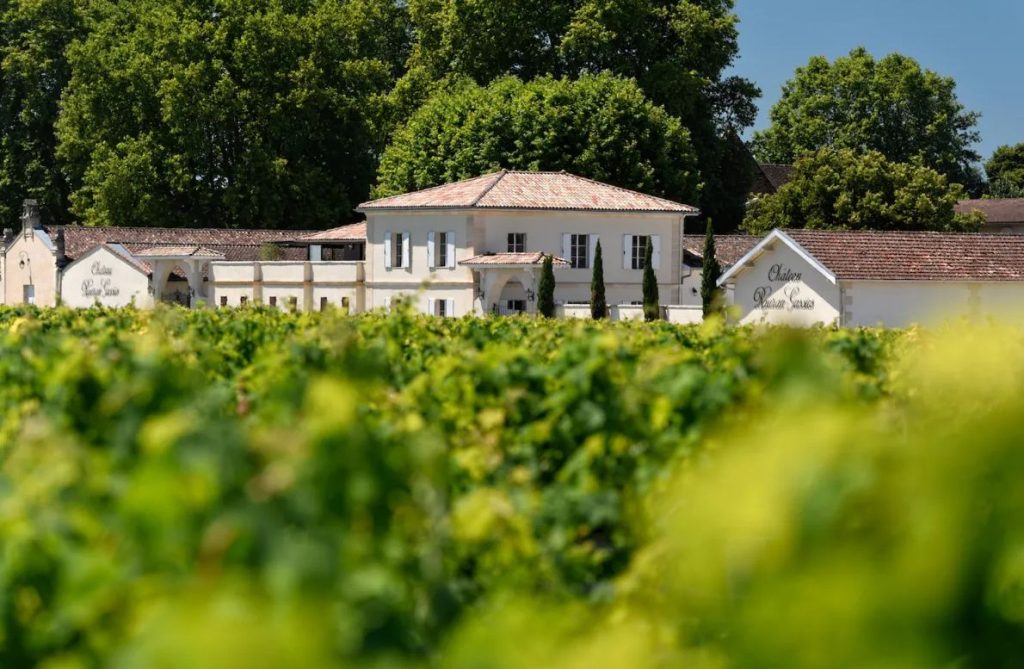
Facing the Médoc vineyards, the Blaye and Bourg wine route unfolds as an exceptional place, between vines and sea. On the Right Bank of the Gironde Estuary, this region offers breathtaking views and is renowned for its four specific appellations and historic citadels, like Blaye, a UNESCO World Heritage Site.
Here are a few options to visit:
- Château Grand Jour: This family estate offers an authentic encounter with its owners, passionate about the reasoned cultivation of their Merlot, Cabernet Franc, and Cabernet Sauvignon grape varieties. Its magnificent château, built in 1763, has even served as a film set. Despite this, the price of tastings is often very reasonable.
- Château Marquis de Vauban: Located right next to the Blaye Citadel, this estate, featuring a magnificent manor, offers a visit that combines history and oenology. It is one of the most visited in the Bordeaux area. It proposes small train tours through the vineyards, with tastings and a winegrower’s meal in the old cellars.
- Château Gros Moulin: This estate is organic certified and committed to sustainable viticulture. It offers a pedagogical approach to organic winemaking tradition within its enclosure, featuring a pretty ancestral tower and umbrella pines. It provides visits and tastings focused on their environmental approach.
How do you get around the Bordeaux wine region?
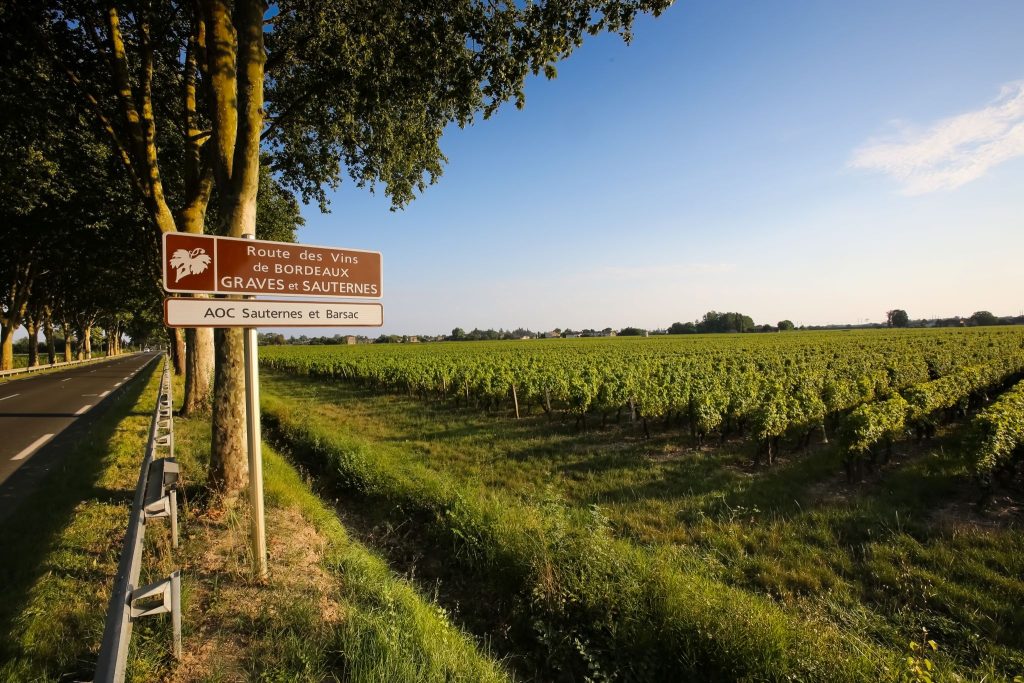
Choosing the right mode of transport for your vineyard visit in Bordeaux is crucial for fully enjoying your experience. Your budget and desire for flexibility, as well as your intention to taste the vintages, will greatly influence your decision.
Driving
- Pros: You go where you want, at your own pace.
- Cons: It is forbidden to exceed 0.5 grams of alcohol per liter of blood to drive in France, under penalty of a fine. This means moderation during tastings is essential! Either designate a sober driver or use spittoons.
Guided tours
- Pros : No driving worries. Prices include transport, château visits, and tastings with a guide. Many tours, including Bordeaux Wine Trails, depart directly from Bordeaux for a half-day or full day. This is ideal for a first vineyard visit.
- Cons : Less flexibility on the wineries visited, general routes less suited for true oenophiles.
Vineyard visit in Bordeaux by Bike
It’s not only possible but also an increasingly popular experience. Many marked routes, ranging from easy loops to longer itineraries, allow for an immersive and eco-friendly exploration of the landscapes. Bike rentals (classic, hybrid, e-bikes) are available in Bordeaux and the region’s key wine towns, either for independent exploration or via organized tours that include transport, rental, guide, and tastings.
- Pros: Total immersion in the landscape, a more ecological and sustainable option, access to unexpected stops at more discreet wineries, and total flexibility.
- Cons: Similar to driving, it’s illegal to cycle after consuming alcohol in France. This means you’ll need to use spittoons during tastings. Furthermore, distances between some estates can be significant, which can be an issue for physical energy or functional limitations, even with an e-bike. Finally, buying vintages and transporting bottles can become a challenge.
Other wine-themed activities in and around Bordeaux

Beyond traditional château visits and tastings, the city of Bordeaux itself offers a plethora of activities to deepen your knowledge of vintages.
La Cité du Vin
A must-visit in Bordeaux, La Cité du Vin is an interactive cultural center dedicated to the civilizations of vintages. Its audacious architecture houses a fascinating permanent exhibition. The visit culminates with a panoramic tasting of great wines, overlooking Bordeaux and the Garonne. An excellent introduction before visiting the vineyards!
Wine-themed river cruises
For a different perspective, wine lovers should embark on a cruise on the Garonne or the Gironde Estuary. These excursions, ranging from a half-day to a full week, include tastings and stops at châteaux. It’s an unforgettable experience offering a unique perspective.
Maison du Vin de Bordeaux
This is a cellar in an 18th-century mansion where you can taste and buy vintages at various prices at its dedicated wine bar. It’s an excellent starting point for organizing your explorations or familiarizing yourself with the wonders of the Bordeaux wine region.
Bordeaux Wine and Trade Museum
In the heart of the historic trade district, the Bordeaux Wine and Trade Museum invites you on a captivating journey into the past. It combines period objects and modern scenography to elucidate the history of vintages and the role of its merchants.

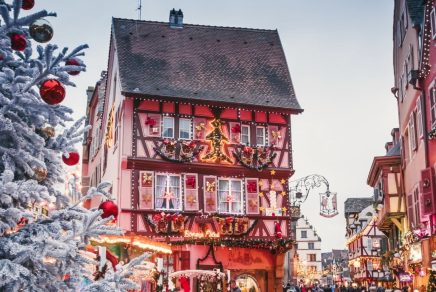
![Marseille_COUVERTURE[1] Marseille COUVERTURE](/wp-content/uploads/elementor/thumbs/Marseille_COUVERTURE1-rehd969x0bx0iqrlg0e2y32782i88bao83rijrgn6w.jpg)
![voyage_de_ski_dans_les_alpes_-_ski_trip_in_the_french_alps_-_COUVERTURE[1] Voyage de ski dans les Alpes - Ski trip in the French Alps - Couverture](/wp-content/uploads/elementor/thumbs/voyage_de_ski_dans_les_alpes_-_ski_trip_in_the_french_alps_-_COUVERTURE1-e1763071913669-renyn82g4stc735hil5xc0ospu44nnis74gdvy5d9k.jpg)


